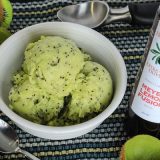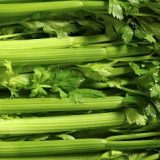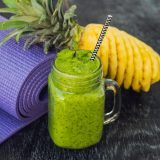In the Store with Sigona’s Featuring: Pears
Sweet, Succulent Pears
One of our favorite fall treats is the pear. It was introduced to the west coast by Franciscan missionaries, early settlers of Oregon’s Willamette Valley and even those 49ers who came to our neck of the woods to search streams and hills for the legendary California gold.
Though pears are grown in California, it’s Washington and Oregon that are renowned for pears with outstanding quality and flavor. The combination of hot, dry summers (believe it or not!), cold winters, and rich, volcanic soil make pears with outstanding quality and flavor.
This week, we’re featuring pears from the Meyer Family Orchards in Medford, Oregon, where weather and soil conditions yield those great-tasting pears.
Family grown
The Meyer family – four generations strong – consistently produce some of the best quality pears you can get. Meyer’s pears have great size, color and flavor, and are picked at just the right time, so all they need are a few days on your counter to ripen and they’ll be ready to eat. (Refrigerate after they’ve ripened.)
Choosing and Using
All pears ripen off the tree. While we do have a few that are ready to eat the day of purchase, most pears need a few days on the counter to soften and ripen to the point that they’re perfectly creamy, juicy and soft. To test for ripeness, check the neck. A slight give tells you the pear is ripe and ready to enjoy.
I love pears in salad. My uncle Carmelo makes a simple vinaigrette with olive oil, red wine vinegar, salt and pepper, shallot and lemon juice, then slips in sliced pears to let them marinate. He then drizzles the vinaigrette over greens and tops off the dish with the marinated pear slices. This provides a lot of complexity to the salad – the sweet, juicy pear mixed with the savory vinaigrette atop a bed of greens is just delicious. I like to add on a sprinkle of candied nuts or cashews to mine, too.
Good for you
Pears are a super source of fiber. A medium-sized pear contains six grams of fiber – almost a fourth of your daily recommended amount. Most of that is in the skin of the pear, and that’s also where you’ll find the majority of nutrients – so eat them skin-on when eating out of hand. Pears are fat-free, sodium free, and are an unexpectedly good source of vitamin C (that same medium pear boasts around 10% of what you need).
Be sure to check out some of our pear recipes, including one for a Bleu Cheese & Walnut Spread for Pears. Pears & cheese go so well together that we’ve also put together a list of pear, wine & cheese pairings based on a handy guide from the Pear Bureau Northwest. Check it out!
Pears from the Meyer Family Orchards:
Bosc: The crisp, honey-sweet Bosc has a long, tapered neck, beautifully russet brown skin and a flesh that is excellent for poaching and baking. Ripe Boscs should give only slightly when ripe, as they’re a firm pear. For a quick dessert, halve and bake (peeled or unpeeled) a Bosc in the oven until the sugars come out. Top it with a sweet sauce or serve it over vanilla bean gelato.
Red D’Anjou: This egg-shaped variety is mildly sweet and mildly juicy. If you like firm pears without a lot of juice for salads, the Red D’Anjou would be a go-to.
Comice: This pear is a green pear with a red blush, and its sweet, succulent flesh simply melts in your mouth. When selecting a ripe Comice, feel for just a little give on the stem end. If the body of the pear is soft, the pear is too ripe and will be mushy. The skin of the Comice tends to be a bit gritty, so you may enjoy it more when peeled.
Bartlett: The most important thing to know about Bartletts is that they turn golden when ripe. Bartletts are picked green, so their golden color is a ripe-and-ready tip.
A Bartlett eaten before it’s ripe will be firm and gritty, but a ripe Bartlett will be smooth and creamy like butter. Bartletts are good for canning, sauce and eating out of hand.
Some Other Pear Varieties in Store Now:
Starkrimson: This lesser-known variety is one of the first pears to ripen each summer.
As it ripens, the color develops to a bright crimson red and it gives off a floral aroma.
This is a sweet, juicy pear with a smooth texture that’s nice for salads or cereal.
Concorde: This pear, like the Bosc, has a long, tapered neck, but has greenish-yellow skin. It has a dense flesh that has a mellow-sweet flavor that some say is like vanilla. This pear is excellent for salads and for baking as it holds its shape when cooked. It can be enjoyed when firm and crisp or softer, which makes for a more mellow flavor and juicy texture.











